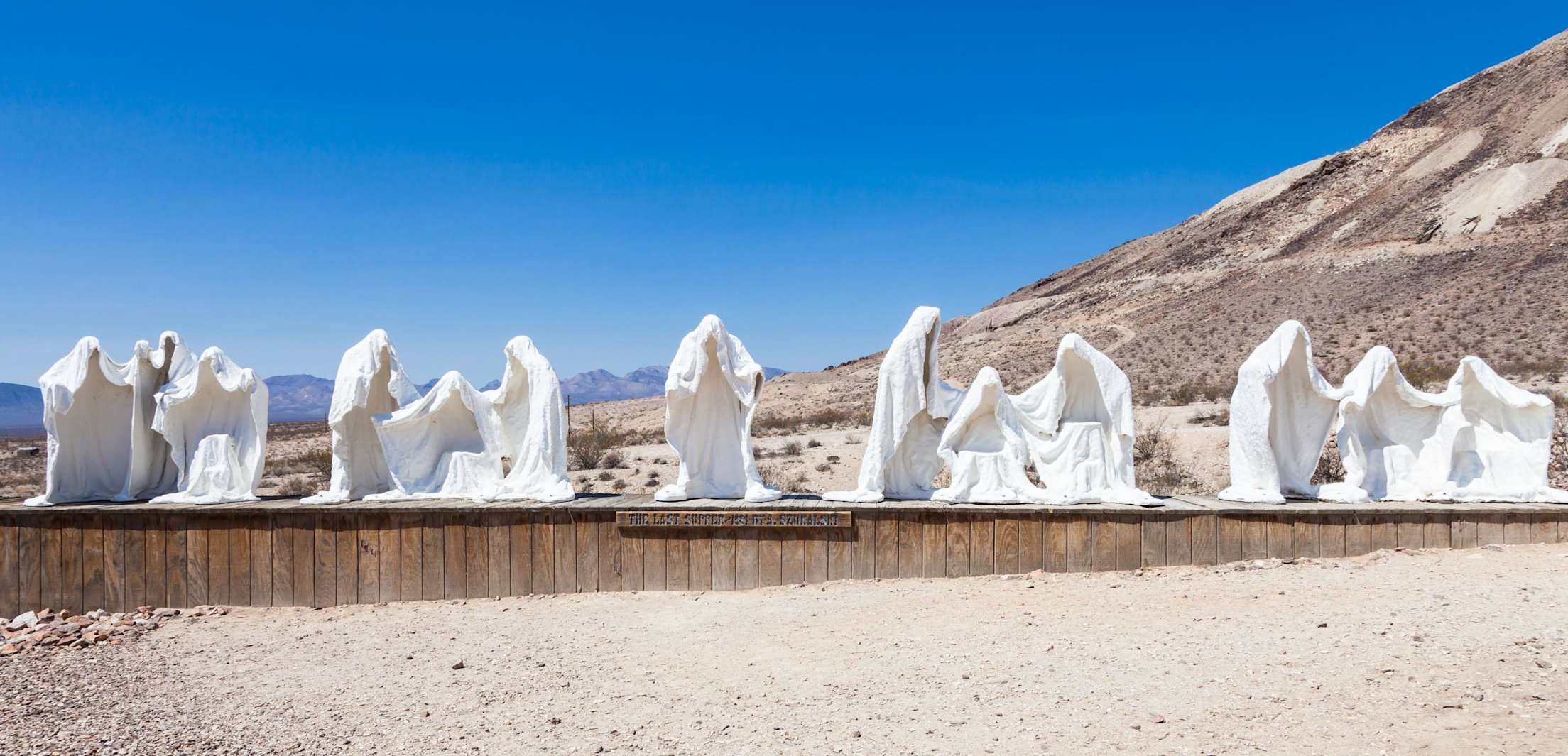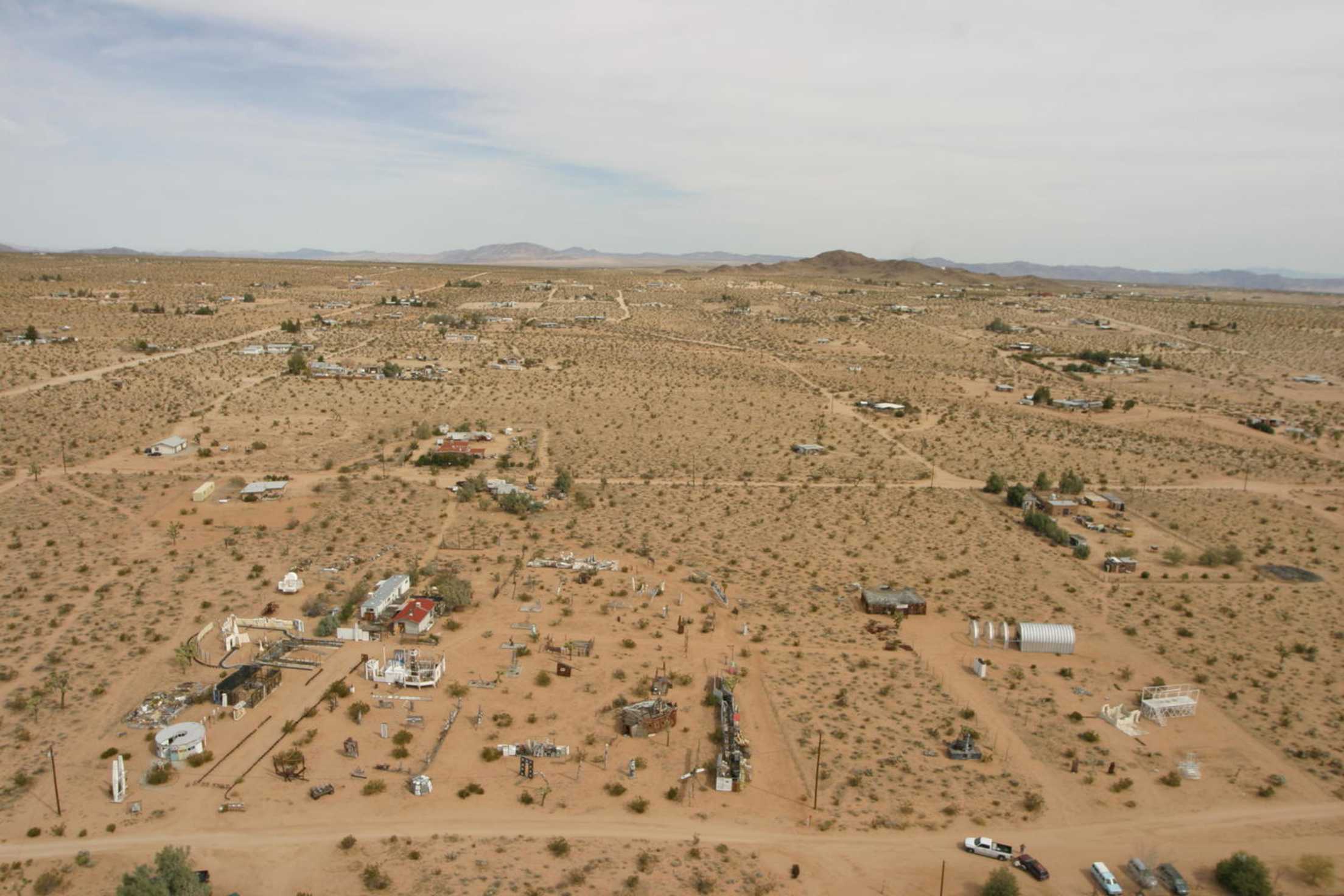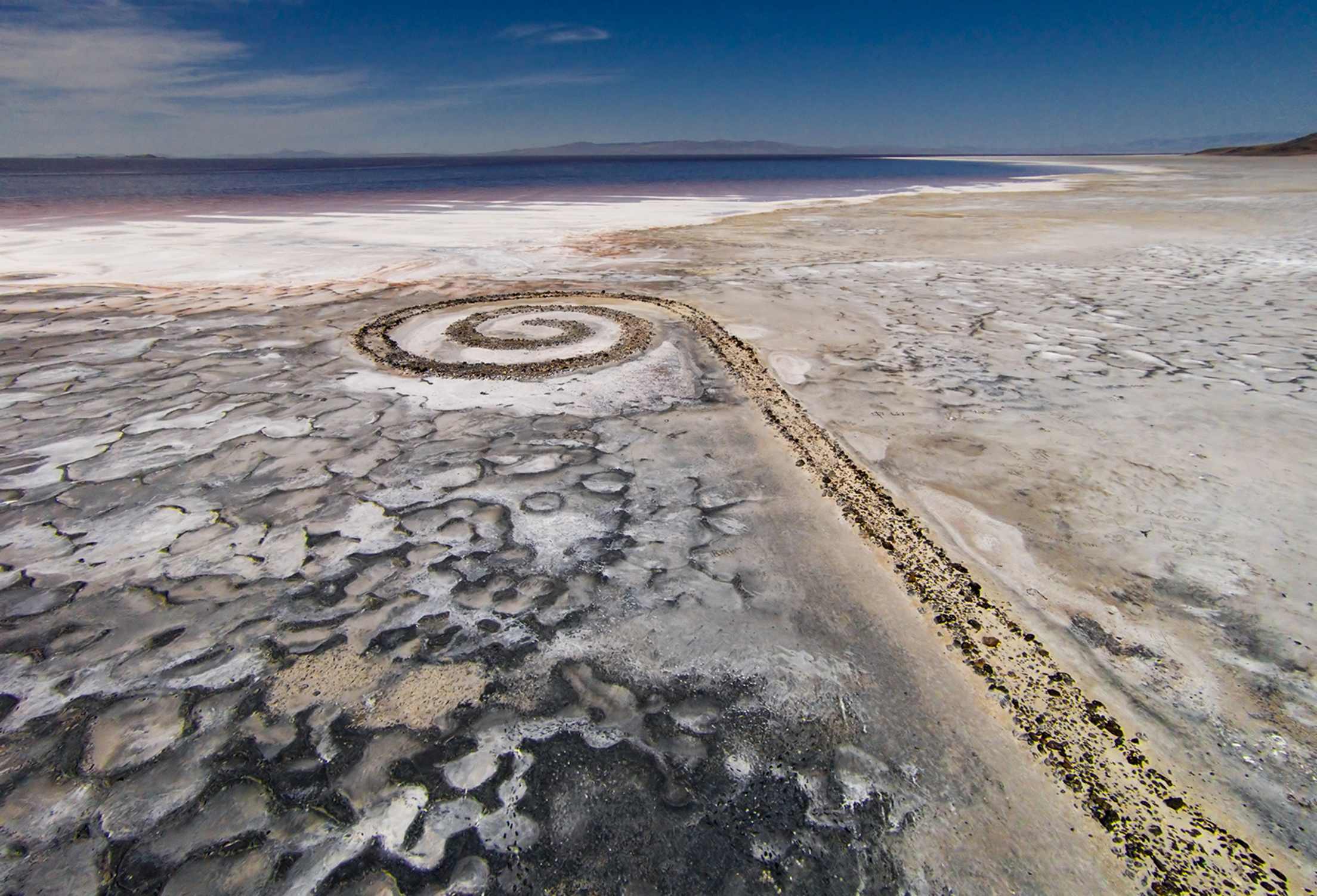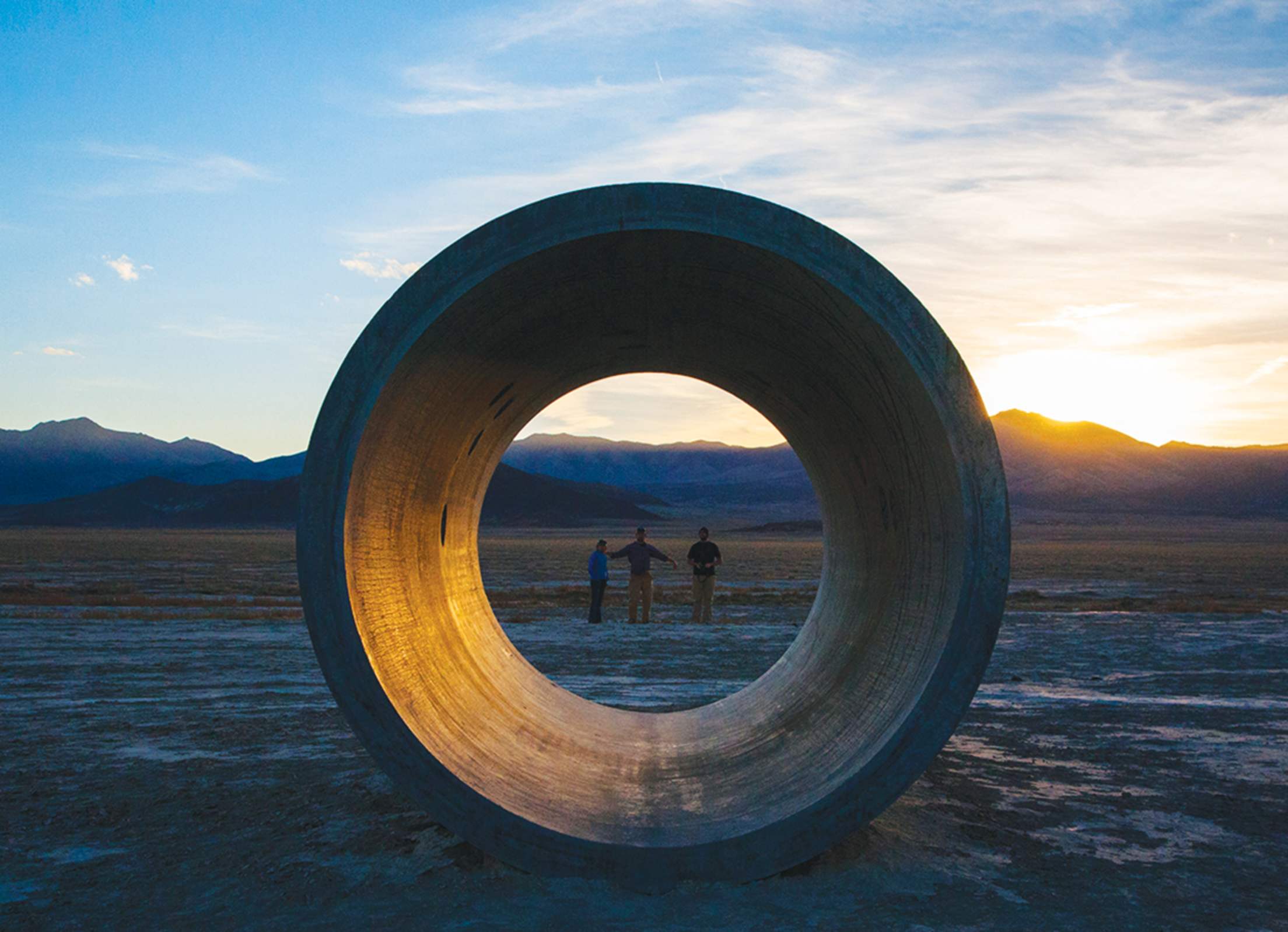
Best Outdoor Sculptures in the Southwest
Visit these incredible pieces of art in the always inspiring Southwestern desert.

To many artists, the Southwest's wide open spaces are like a vast empty canvas waiting to be filled. Their creative responses to that challenge range from the minimal to the monumental, from the profound to the just plain weird. Whatever their size or significance, these works are worth searching out on your next trip to the desert. Here are some of the most interesting and accessible.
Seven Magic Mountains
Swiss artist Ugo Rondinone arranged 33 brightly painted boulders (some weighing upwards of 28 tons) in seven vertiginous stacks in the desert about a half-hour's drive south of the Las Vegas Strip. According to the artist, it's "a creative critique of the simulacra of destinations like Las Vegas”—meaning you could compare the garish yet spare work to the bright neon towers not far to the north.
How to See It
Directions are available online. There’s a parking lot but no other facilities; be prepared for a raw desert environment. There are some interpretive signs, and you can also call (702) 381-5182 for a phone-based guide.

"The Last Supper" by Charles Albert Szukalski.
Goldwell Open Air Museum
In the Nevada ghost town of Rhyolite, a group of artists recruited by the late Albert Szukalski assembled an "art situation" encompassing seven large-scale sculptures and installations that, in one way or another, respond to the desert's vastness and the site's isolation. The works include Szukalski's own haunting The Last Supper and an instance of Eames Demetrios's massive public-art project, Kcymaerxthaere.
How to See It
Rhyolite is about four miles west of Beatty (which is itself about 120 miles north of Las Vegas on U.S. Highway 95). The facility is free and open 24 hours a day, 7 days a week. It has parking and a visitor center (with exhibits and a gift shop) on site; the visitor center closes early during the summer (because of the heat), but you can still view the sculptures.

Joshua Tree Outdoor Museum.
Joshua Tree Outdoor Museum
After years of working as an artist, activist, and teacher in Los Angeles, Noah Purifoy moved to the Mojave Desert in the late 1980s and proceeded to fill 10 acres of land with more than 100 sculptures constructed from recycled materials. Some are representational, others abstract, all reflective of his found-object aesthetic.
How to See It
The museum is just north of the town of Joshua Tree. It's open every day from sunrise to sundown and free of charge. You're asked to sign in at the welcome kiosk, where you can also get a brochure for a self-guided tour; guided tours are available by advance reservation.

Anza-Borrego Metal Sculptures
Dragons, elephants, dinosaurs, ancient gods, and other fanciful figures—130 metal sculptures in all—emerge from the desert around the resort town of Borrego Springs, California, all the work of self-taught Mexican artist Ricardo Breceda.
How to See It
The sculptures are scattered around the Galleta Meadows Estates in Borrego Springs; just go north or south on Borrego Springs Road from the town center. When you spot them, you can park and walk out into the desert for a closer look. A detailed map is available at the Anza-Borrego Desert Natural History Association store in town.

"Spiral Jetty" by Robert Smithson.
Spiral Jetty
It's perhaps the most famous piece of Land Art (which uses the land itself as a medium): In 1970, Robert Smithson and his team shaped more than 6,000 tons of rock and earth into a 1,500-foot-long, 15-foot-wide spiral that winds into Utah's Great Salt Lake. The result suggests one of those pictographs you see carved into sandstone all over the Southwest—but on a massive scale. The lake level has waxed and waned since the piece was constructed, at times submerging the piece entirely, more recently leaving it stranded on the deserted shore as the waters recede.
How to See It
It's about two hours northwest of Salt Lake City, an hour from Interstate 15, on the northeastern shore of the lake. There are no facilities at the site; bring your own everything. You can download a brochure from the Dia Foundation.

"Sun Tunnels" by Nancy Holt.
Sun Tunnels
Four huge concrete tubes—18 feet long, nine feet in diameter—look like they belong at a big-city construction site, not out in the middle of the Utah desert. But artist Nancy Holt arranged them very specifically: On solstices, the tunnels line up with the sun at sunrise and sunset, and when the sun shines through the small holes drilled into the top of each tube, the constellations of Capricorn, Columba, Draco, and Perseus appear on the inner walls.
How to See It
The tubes lie about four hours west of Salt Lake City, near the town of Lucin and the Nevada-Utah border. All the usual caveats about traveling to remote desert sites apply: Bring everything (including water) with you. You can camp at the site, but there are no facilities.
More Desert Art
There are several other notable works out there in the Southwestern desert that aren't so accessible. A few—such as James Turrell's Roden Crater, Michael Heizer's City, and Charles Ross's Star Axis—are still under construction and strictly off-limits to outside visitors. Walter de Maria's Lightning Field relies on remote solitude for its effect, and so purposefully restricts viewers to a handful at a time. Others are hard to see just by virtue of being really hard to get to. (One guide to Heizer's Double Negative warns, "Without care, you can drive off the edge of the mesa, and … the tumble into the valley below will strongly decrease your chances of seeing the artwork.")